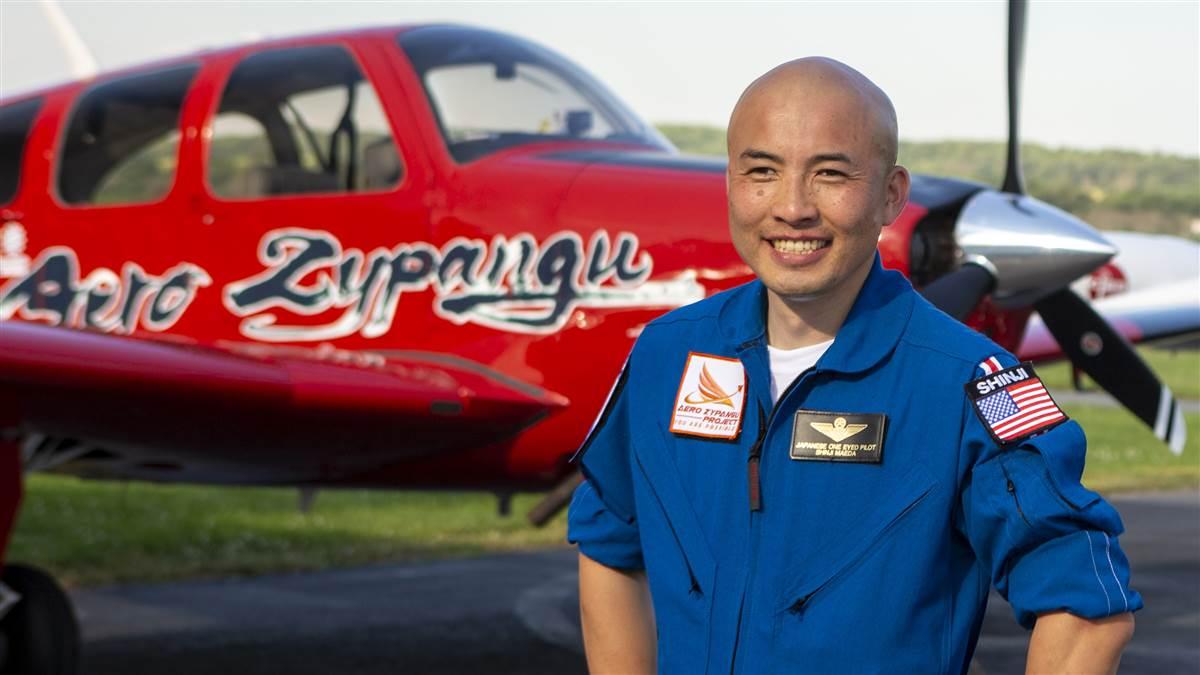Five questions: Shinji Maeda
Pilot overcomes early adversity

Now 41, Maeda overcame the physical and mental trauma of a crushed optic nerve to become a commercial pilot and inspirational speaker. Growing up on his family’s farm in Hokkaido, Maeda dreamed of flying. Maeda’s mother went to the local library to search for a special aviation high school so Maeda could begin his aviation studies, and he thrived in the aviation-specific high school. However, a car hit him, causing a severe skull fracture, brain swelling, and other damage. “Doctors gave me a 50/50 chance of survival,” he said. Maeda lost vision in his right eye; “In Japan I was considered handicapped. That meant I would not get a job or have a career. My father said to me, ‘Shinji, why not go to the United States and study aviation?’” Maeda attended Embry-Riddle Aeronautical University in Prescott, Arizona. With safety professor Ed Wischmeyer’s help and his parents’ blessing, Maeda navigated the red tape, regulations, and training to become a certificated single-engine land pilot in 2005. He then earned his multiengine certificate and instrument rating. Maeda is a CFI for Snohomish Flying Service, has approximately 1,400 flight hours, and is a Boeing operations analyst. He is planning an around-the-world flight in May 2021.
How did you get started in aviation? I started my aviation dreaming as a child. There is a Japanese government flight school where I was born, and I watched their training Bonanzas from my father’s field. I enrolled in one of the oldest Japanese aviation academies in high school and studied aerospace engineering as a college student. I came to the U.S. to study at Embry-Riddle Aeronautical University in Prescott, Arizona.
What were your biggest challenges? The car accident in 1998 in Japan when I was a university student; I was 18 years old and it hit me so hard physically and mentally. Everything stopped. People here in the U.S. tell me “One eye? So what?” but it’s completely different in Japan. With this physical condition, I was called handicapped and you cannot be whatever you want to be in Japan like in the U.S.
What is your favorite aviation-related activity? Whenever I see a big smile on a student’s first solo flight or overcoming an obstacle, it pays me off a lot! Especially, after they get their license, I always feel that “We did it. Yes, we did it!” like I became a pilot. Being a CFI is not my job, it’s my pay-it-forward opportunity.
What is your avorite aircraft? My 1963 Beechcraft Bonanza P35. We named her Lucy. Her birthday is the same day as mine—7/31. Needless to say, she is much, much more mature than me.
Do you have any advice for students? American aviation gave me a second chance in my life. Life is sometimes painful. Some people complain about everything. But guess what, suck it up and let’s move on because we are living in a wonderful country. Have the right attitude and you will never ever stall in your life.


